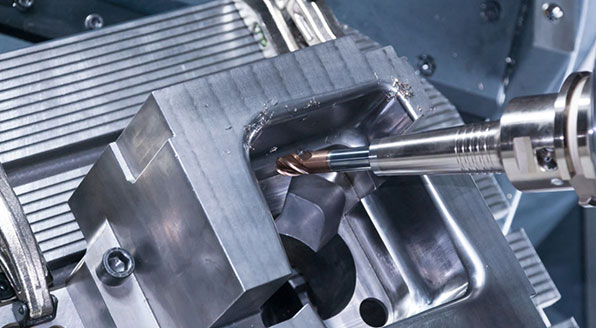Time to read: 6 min

Understanding CNC Precision Machining
CNC (Computer Numerical Control) precision machining is a computer-controlled process that uses specialized machines and tooling to produce parts with exceptional accuracy. This method is capable of achieving tolerances as tight as ±0.001 inches, surpassing the capabilities of standard machining techniques.
The Process of CNC Precision Machining
The journey from design to finished part in CNC precision machining involves several key stages:
Design and CAD Modeling
Engineers and designers utilize CAD software to create detailed 3D models that serve as the blueprint for the machining process. Considerations for manufacturability are critical during this phase.
CAM and CNC Programming
Computer-Aided Manufacturing (CAM) software translates the 3D model into G&M codes, which guide the CNC machine's tool movements. This programming phase is essential for simulating tool paths and optimizing material removal.
Setup of CNC Machine
The machine setup includes tool and workpiece installation, with the selection of the right tools and secure work holding being paramount for achieving final precision.
Machining the Part
The CNC machine, under the control of pre-programmed instructions, carries out the material removal process. Operators may fine-tune parameters such as spindle speed and feed rate for optimal results.
Post-Processing and Finishing
The final stage involves removing any tool marks, burrs, or chips and applying finishing techniques like grinding, sandblasting, or polishing to achieve the required surface quality and dimensions.
Types of Precision CNC Machines
A variety of machines contribute to the precision machining process, including:
- CNC Milling Machines: Ideal for complex parts from flat workpieces, with high-speed spindles and multi-axis capabilities.
- CNC Turning and Lathes: Used for creating axially symmetrical items with intricate details.
- CNC Drilling Machines: Employed for creating holes with precision, using techniques like spot drilling and peck drilling.
- Electrical Discharge Machines (EDM): A non-contact process for eroding hard metals with electric sparks.
- CNC Plasma Cutting Machines: Utilize ionized gas for cutting thermally conductive materials with exceptional precision.
- CNC Precision Grinding Machines: Post-processing equipment for achieving smooth surfaces and tight tolerances.
Materials for CNC Precision Machining
CNC precision machining is compatible with a wide range of materials, including various metals and plastics. Selection is based on the part's functionality and operational environment.
Applications and Industries
CNC precision machining is integral to industries where precision and surface finish are critical, such as:
- Automotive: For custom parts, engine components, and prototypes.
- Aerospace: For structural components, turbine blades, and avionics housings.
- Medical: For surgical instruments, implants, and diagnostic equipment.
- Electronics: For compact components like PCB enclosures and connectors.
Advantages of High Precision CNC Machining
- Increased Accuracy and Repeatability: Ensuring identical parts across large volumes.
- Reduced Waste and Enhanced Efficiency: Optimal tooling and parameters minimize material waste.
- Complex Geometries with Tight Tolerances: The capability to manufacture intricate parts with precision.
- Material Versatility: Accommodating a wide range of materials, from metals to plastics.
- Flexibility in Production: Adaptable to various production volumes and requirements.
Choosing a CNC Precision Machining Partner
When selecting a partner for precision CNC machining, consider their technical capabilities, industry experience, and the quality of their machinery and processes.
Conclusion
CNC precision machining is a cornerstone of modern manufacturing, offering a combination of speed, efficiency, and customization that is essential for producing high-precision components across various industries.




